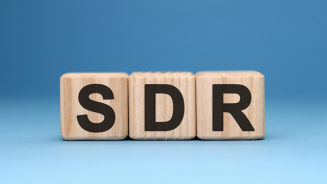If MacDonald is not keen on equities, he is even more negative on fixed income. He says: “On the fixed income side we are underweight duration and have been underweight for some time. There are still plenty of government bonds trading at a negative yield. In spite of some uptick in yields, we still don’t see much value to be found in the government bond space.
“Certainly, the valuation argument has weakened as yields have risen and we are not as wedded to a short-duration stance looking ahead, but we still prefer to get our risk from credit, notably emerging market debt and high yield.”
If MacDonald doesn’t like fixed income or equities and they are not holding cash, where is the remainder of the portfolios invested? Architas has built specialist expertise to support the launch of the Architas Diversified Real Assets Fund, and the other portfolios also have higher weights in alternative and absolute return-style funds. This weight has increased in recent months.
MacDonald says: “These funds give us diversification and a decent yield, plus they provide a buffer against rising interest rates and inflation. Within the broader risk profile, we cherry-pick various areas from the Real Assets fund that are appropriate. This includes aircraft leasing or specialist lending, for example.”
Notably, however, it does not include equity long/short funds. He is unwilling to reduce the group’s underweight equity position further.
Virtuous circle
For the time being, although MacDonald sees inflation in economies, he is not overly concerned that it might go too far. For the time being, he sees a reasonably stable, steady level of inflation with the potential to create a virtuous circle: higher wages increase consumption, which creates demand for goods, which means companies employ more people.
The risk, to his mind, is that central bankers are behind the curve. Central bankers are more likely to err on the side of not raising rates because it is easier to tackle inflation than deflation – but the risk is that they leave it too long and inflation takes hold.
However, he does not believe there is much evidence to support this at the moment, nor is he looking to increase inflation protection, believing that equities provide sufficient protection.
The group offers both active and passive portfolios. For MacDonald’s part in the blended portfolios, he believes in using active funds in those areas that will give him the biggest bang for his buck.
“We believe they can deliver the most alpha or outperformance generally,” he says. “The potential for outperformance is higher in the equity space than in the bond space.
“As a result, our portfolio is tilted to passive on the bond side and we use a range of trackers to tilt the duration positioning. We take far more active risk in high yield and emerging market debt as these are the most inefficient areas.”
continued on the next page





